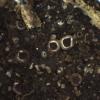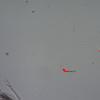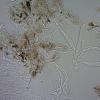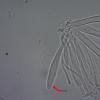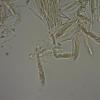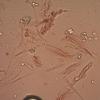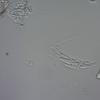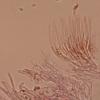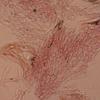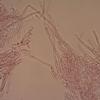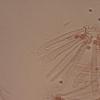
21-12-2024 12:45
 Marc Detollenaere
Marc Detollenaere
Dear Forum,On naked wood of Fagus, I found some ha

23-12-2024 12:10
 Bernard CLESSE
Bernard CLESSE
Bonjour à toutes et tous,Pourriez-vous m'aider à

17-12-2024 12:33
 Lothar Krieglsteiner
Lothar Krieglsteiner
this fluffy anamorph was repeatedly found on decid

22-12-2024 10:19
Hello,can anyone help me identify this small ascom

22-12-2024 10:53
 Bernard CLESSE
Bernard CLESSE
Pourriez-vous me confirmer ma détermination de ce

20-12-2024 17:32
Louis DENYBonsoir forumTrouvé à Belfort, 400 m altitude, s
Hyalopeziza-like on Fagus
Marc Detollenaere,
21-12-2024 12:45
 Dear Forum,
Dear Forum,On naked wood of Fagus, I found some hairy discs with dark hymenium.The hairs were whitish,partially glassy, septated and cylindric .
Spores were cylindric, 8.3-9x2.3-2.9µ and contained 2 guttules.IKI reaction apical apparatus was positive (blue).Hyalopeziza seemed to be close.
Andgelo Mombert suggested Cenangium of H alnicola .
Any suggestions? Hyalopeziza valesiaca?
Marc
Andgelo Mombert,
21-12-2024 16:38

Re : Lasiobelonium-like on Fagus
Hello,
Perhaps Cenangium alnicola ?
Perhaps Cenangium alnicola ?
Hans-Otto Baral,
22-12-2024 18:46

Re : Hyalopeziza-like on Fagus
C. alnicola is a fungus with long brownish hairs, resembling a Lasiobelonium.
Marc Detollenaere,
23-12-2024 11:19

Re : Hyalopeziza-like on Fagus
Any suggestions Hans Otto?
grts
Marc
grts
Marc
Hans-Otto Baral,
23-12-2024 11:53

Re : Hyalopeziza-like on Fagus
Sorry, I can't. Best would be to provide the excipulum. You say the hairs did not react on IKI, but do you mean the asci?
Marc Detollenaere,
23-12-2024 20:25
Hans-Otto Baral,
24-12-2024 09:41

Re : Hyalopeziza-like on Fagus
Dematioscypha has longer hairs and inamyloid asci (except for D. castaneae).
I would rather search in Psilocistella (quercina).
Marc Detollenaere,
25-12-2024 07:51

Re : Hyalopeziza-like on Fagus
You are right Hans-Otto.
It is exactly as the description in the article of Quijada(2014)
Thx
Marc
It is exactly as the description in the article of Quijada(2014)
Thx
Marc


